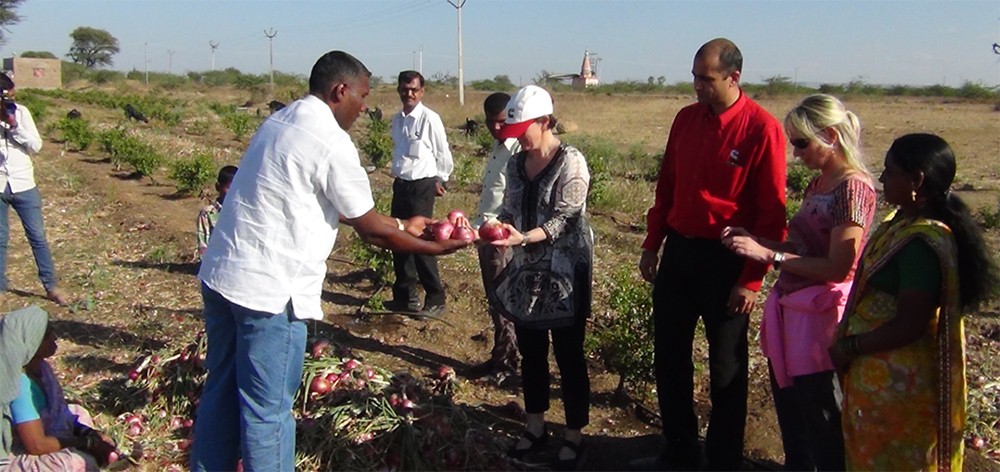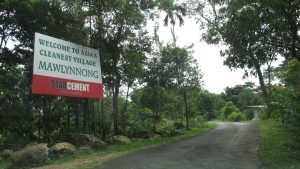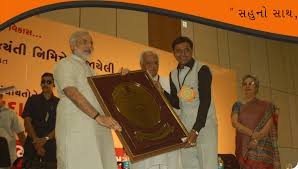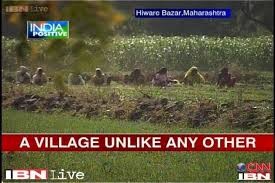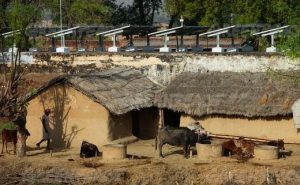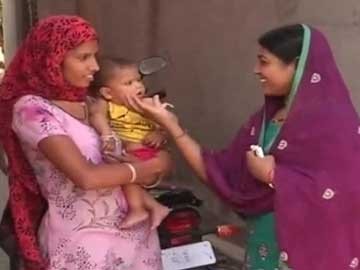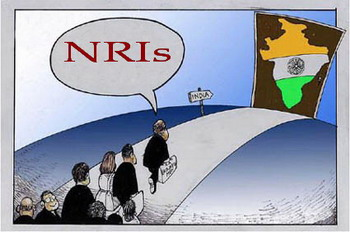Some inspiring self sufficient Indian Villages
The Government of India has many schemes for village development. Some of the schemes are improved agricultural practices, watershed development, use of renewable energy, sustainable roads, electricity, potable water supply, education, sanitation etc. But most of these schemes and plans remain on paper only. Thousands of villages today are deprived of basic facilities such as primary health care, education, roads, electricity, water supply as the government machinery is slow and the local representatives lack the assertiveness to get work done. In the same country, there are some villages which became self sufficient because of powerful individuals who took necessary initiatives and made the villages self sustainable. I wish to mention some self sufficient villages in India.
Ralegan Siddhi:
Anna Hazare –the famous social activist is credited for the prosperity of this village. Ralegan Siddhi is in Parner taluka, distict Ahmednagar, Maharashtra. This village is considered a model of environment conservation.
In 1975 the village was afflicted by drought. Along with the drought came scarcity. To top it all illicit liquor trade spread all over the village. The village tank could not hold water as the embankment dam wall leaked. Work began with the percolation tank construction. Anna Hazare encouraged the villagers to donate their labor to repair the embankment. Once this was fixed, the seven wells below filled with water in the summer for the first time in the history of the village!!
The village’s biggest accomplishment is in its use of non-conventional energy. For example, all the village street lights are lit on separate solar panels.
The villagers carry out programs like tree planting and terracing, to reduce soil erosion. They have dug canals to retain rainwater. For energy, the village uses solar power and biogas (some generated from the community toilets). Windmills are also used for energy. The project is heralded as a sustainable model of a village republic. Ralegan Siddhi has set an example for other villages demonstrating that it is possible to rebuild natural capital in partnership with the local economy. This village is self sustained, since past 25 years. The village has water supply year round. Besides this, it has a grain bank, a milk bank, and a school. Poverty is almost eradicated from the village.
Odanthurai:
Odanthurai village is situated 40 kilometers north of Coimbatore in Tamil Nadu. It has become famous for its imaginative, environmentally conscious approach for reducing its dependence on energy supplied by Tamil Nadu Electricity Board (TNEB), a body of the state government. The local panchayat has a diversified energy portfolio; it owns 65 solar-powered streetlights, a biomass gasifier and a 350-KW wind farm.
Mr. R. Shanmugam, who was the panchayat president from 1996 to 2006, points out, Odanthurai used to spend 60 % of its public budget on power. Shanmugam worked out the costs; a small wind farm would cost Rs.2.3 crore. Odanthurai could generate Rs 35 lakh as down-payment for a bank loan. With the government support, the panchayat would need a bank loan of Rs 1.15 crore. The gram panchayat liked the proposal and gave its collective seal of approval. This one-of-its-kind proposal took the district administration by surprise. It was hard to imagine a panchayat could aim to be as entrepreneurial as a private company. The state government sanctioned the project under the Remunerative Enterprises Scheme. Commissioned in 2006, the project became the first ever power project undertaken by a local body in India.
The villagers decided not to rely on TNEB because it is most unreliable energy provider. On average, Odanthrai used to suffer three hours of blackout every day. However, Odanthurai’s 6,500 people nonetheless know that their street lights and electric drinking-water pumps will keep operating. That is even the case in the hamlets of Vinobhaji Nagar and Kalarpudur.
Odanthurai’s panchayat only uses around 50 % of the electric power generated by the windmills and sells the rest to the TNEB. Last year, that deal boosted the local panchayat’s budget by the equivalent of $ 38,000. That’s so motivating!!!
The path to local self-sufficiency, however, was not free of obstacles. But the villager’s grit and patience sorted out the problem
Mawlynnong:
Mawlynnong, a small village in Meghalaya, this village was awarded the prestigious tag of ‘Cleanest Village in Asia’ in 2003 by Discover India Magazine; it is located at about 90 kms from Shillong. According to visitors, you cannot find a single cigarette butt/plastic bag lying around in the village. When we see litter around our homes, offices, roads, monuments, gardens it is so upsetting; we can only observe this helplessly because we can hardly do anything about it.
But, the villagers in Mawlynnong village say that they are used to keeping their houses and surrounding areas spick and span. From the time of their forefathers, they have been trained right from their childhood to keep their surrounding clean and neat. Embor Klamet, a Bread and Breakfast owner and tour guide from Mawlynnong, says that “Kids are given the task of keeping the area around the house clean as soon as they reach Grade 1 or Grade 2 in school; if they don’t do it, they don’t get food.” This place offers some good treks and guided walk to discover the some breathtaking sights. Mawlynnong is home to about 95 families.
You can meet the gentle Khasis, one of Meghalaya’s major tribes, who trace their lineage from the mother; you can see orchids, roses, lilies, birds of paradise, local flowers and even the carnivorous pitcher plants here. The old cobble-stoned routes are replaced with concrete ones; women of the village break the stone, while men pave little pathways leading to a few remaining traditional bamboo houses and the plenteous, sturdier wooden ones.
You will see very few concrete houses in the village. And the villagers plan to keep away from concrete houses. The village headman called ‘Dorbar Shnong’ and the tourists have advised the villagers to stay away from concrete. Tourism, traditional occupation of cultivating betel nut, broomcorn, black pepper, berries, bay leaf and delicious fruits like oranges, lemon, pineapple and the local soshang fruit are some of the occupations of the villages.
Punsari:
This village is located in Gujrat and it will put most metros to shame. This village prides WiFi, CCTVs, AC classrooms and much more. It is funded by the Indian government and the villager’s own funding model. The village has a mini-bus commute system and various other facilities. Punsari village is barely 100 km from Ahmedabad. You will see closed-circuit cameras; water purifying plants, air-conditioned schools, Wi-Fi, biometric machines – the village has it all. And all of it was done in a matter of eight years, at a cost of a mere Rs. 16 crore.
Young Himanshu Patel who is sarpanch of the village is the man behind the transformation. A graduate from North Gujarat University, Mr Patel had won the panchayat polls in 2006, at the age of 23. Back then, the village didn’t even have proper roads, power or water. The panchayat funds were in deficit. Mr Patel found though plenty money came but its utilization was faulty. Young Himanshu Patel took the right steps and brought in technological changes in the village.
Hiware Bazar:
Is famously known as a village of 60 millionaires!!! It is located in the Ahmednagar district of Maharashtra. This village is situated in draught-prone Ahmednagar district. The village has transformed because of gigantic efforts of Popatrao Pawar. This village is noted for its irrigation system and water conservation program. Poatrao Pawar – the only postgraduate in the village contested for the post of Gram panchayat Sarpanch and won. After winning the elections, he closed the illicit 22 liquor retail outlets in the village. He worked hard to secure bank loans for farmers and started rainwater harvesting, water conservation and management programs, which involved building 52 earthen bunds, percolation tanks, 32 stone bunds and nine check dams. He followed the development plan based on village Ralegan Siddhi, 35 km away, from Hiware Bazar.
By the end of 1990, when the villagers saw prosperity, reverse migration started as families started returning home. In 2012, the village with its 235 families and an overall population of 1,250, had a monthly per capita income Rs 30,000, up from Rs. 830 in 1995, plus today it has 60 families with an annual income of over 10 Lakh rupees.
Dharnai: First fully solar-powered village
Dharnai, a village in Bihar, conquered over 30 years of darkness by developing its own solar-powered system for electricity. It is India’s first village powered entirely by solar electricity. A few days ago, Greenpeace and two other NGOs that work in the area (BASIX and CEED) started building a solar power micro-grid to serve the village, and after a few months of testing, the autonomous 100 kilowatt system officially went online.
The Dharnai grid serves about 450 homes, housing 2,400 residents, as well as roughly 50 businesses, streetlights, water pumps, two schools, health care center, and other public and private ventures. It has a battery to store excess electricity, for use during the night hours. Today, Dharnai is an energy-independent village!! Students no long need to limit their studies to the day time; women no longer limit themselves to stepping out in the day in this village of 2400 residents.
Chappar:
A village that distributes sweets when a girl is born
Chappar village in Haryana has a woman Sarpanch called Neelam. Haryana is notoriously famous for male domination and the lowest girl ratio of 877 girls to 1000 boys. Neelam became the first woman Sarpanch of Chappar village, she opted for the position because she wanted to see a positive change in the village. Neelam brought in positive changes for girls. Today, the villagers distribute sweets and welcome every newborn girl child. And, after so many years, women of this small village have started living without a ghoonghat (veil).
She became an inspiration to all the women. Girls are sent to schools, they are re-initiated for their studies and to become more confident and active in the village matters. Neelam has a dream for her village. Her vision is to make it cleaner, efficient and a lot friendlier to the senior citizens who have to run around for claiming their rights. Neelam has taken up a stand to end patriarchal traditions and give way to capable women for empowering communities
Kokkare Bellur:
This village is 83 km from Bangalore, off the Mysore Highway by around 12 km. It is a village that really loves its local birds. This place is famous for its Spot Billed Pelicans and the Painted Storks that can be sighted here in vast numbers during season time. This scenic village has paddy fields, cattles, water, and lots of exotic birds. The village is in the Maddur Taluka of the Mandya district of Karnataka.
Kokkare is the local name for “Painted Storks” that are very famous in this region, “Bellur” meaning village of jaggery; hence, the village has derived its name from the bird. The village thrives on the bird’s droppings, which are called “guano”, and they are rich in potassium. The villagers use the bird’s droppings as manure for their cultivation. Indeed, the villagers believe that the birds bring in their homes good luck and prosperity. That is the beauty of this place!!
The villagers believe in conservation of the nature. While most other villages consider birds as nuisance because they harm the crops, this village conserves the birds. The district is full of sugarcane fields and this village in particular is famous for having large colonies of Spot-billed Pelicans and Painted Storks nesting in trees within the village. The villagers treat their winged companions as family and have even created an area for wounded birds to rest and heal. There is so much to learn from these villagers.
Conclusion:
Mahatma Gandhi’s vision of a free India was self-governing, self-reliant, self-employed people living in village communities, deriving their right livelihood from the products of their homesteads. Maximum economic and political power including the power to decide what could be imported into or exported from the village and the power of decision making would remain in the hands of the village assemblies.
People have lived for thousands of years in a relative synchronization with their surroundings: living in their villages, weaving homespun clothes, eating homegrown food, using homemade goods; caring for their animals, forests, and lands; celebrating the fertility of the soil with feasts; entertaining themselves with local arts, dance, folk music etc. Villagers have built temples, churches and mosques to nurture their faith. Self sufficient villages will build India’s economy much stronger.












































